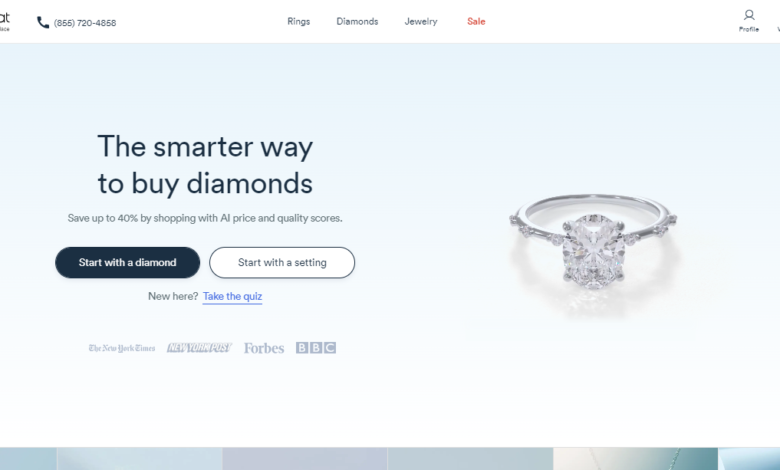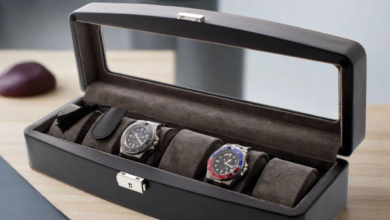Are lab-grown diamond earrings certified and graded like natural diamonds

Although lab-grown diamonds don’t exit naturally, they have the same chemical nature as natural diamonds. Are you looking for the certified lab-grown diamonds for your jewelry? Well, Rare Carat provides the GIA-certified lab-grown diamonds, which typically grade like natural diamonds.
Rare Carat is America’s No. 1 online search engine and the best place to buy lab-grown and natural diamonds at reputable prices. They provide the GIA-trained gemologist usually to consult about your diamonds along with the Rare Carat Report for quality checks of the diamonds. Plus, you can have discount vouchers, a return policy, and a 100% money-back guarantee here at Rare Carat.
Search here for further insight into the profile of the Rare Carat.
Lab-grown diamonds
A lab-grown diamond is a real diamond that is formed in a machine instead of on earth and has the same chemical, physical, and visual characteristics as a natural diamond.
Chemical Vapour Deposition (CVD) diamonds and High-Pressure High Temperature (HPHT) diamonds are the two methods used in labs to manufacture diamonds. The HPHT technique crystallizes carbon by means of high pressure and high temperatures, which brings it the closest to the natural process. The CVD process, which was developed in the 1970s, is fast taking the lead in the production of diamonds since the machines are smaller, need less energy, and require less growth time.
Natural diamond vs lab-grown diamond
Although lab-grown and natural diamonds appear identical to the human eye, there are microscopic and molecular differences. Unless your lab equipment is really pricey and advanced. Even a jeweler will not be able to distinguish between lab-grown and real diamonds in terms of appearance. They are identical in physical terms.
Choosing between a lab-created diamond and a natural diamond depends on three factors: your choices, budgets, and whether you are concerned about resale value. A natural diamond is a safe option. While you’ll never sell it for more than you paid. New couples pick lab diamonds! It is a more sustainable, certainly conflict-free, or prefer a larger diamond for your money.
Lab diamonds get GIA certified
Yes, lab-grown diamonds are verified by the Gemological Institute of America (GIA) or other recognized gemological laboratories. The GIA, a well-known and accepted authority on diamond grading, provides grading reports for both natural and lab-grown diamonds. The GIA grading report for lab-grown diamonds gives information on the diamond’s color, clarity, cut, carat weight, and other important qualities. This certification gives confidence and openness about the quality and standards of lab-grown diamonds.
Diamond certification and grading at Rare Carat
The diamond’s language is the grading system. Its objective is to explain the quality of diamonds to you in the most understandable terms possible, and it accomplishes this by giving specific ‘grades’ to each stone. These 4C-based ratings are often awarded to each stone in ‘diamond grading laboratories’, which are managed by professional gemologists who examine diamonds in highly controlled surroundings hour after hour, day after day.
For natural diamonds, Rare Carat usually suggests GIA certifications. It is the industry’s gold standard, and many other laboratories are known to ‘overgrade’. Typically for lab-grown diamonds, they recommend IGI or GCAL certification.
Lab-grown diamond grading at Rare Carat
Lab diamonds are graded using the same scale as real diamonds, taking into account the 4C’s: carat weight, color, clarity, and cut.
While the GIA grades lab-grown diamonds, the IGI produces more grading reports since they have long held a monopoly in the industry. Both grading laboratories, in addition to GCAL, are reliable.
Diamond grading report at Rare Carat
What is the definition of a diamond grading report? A diamond grading report is a document that provides the buyer with a gemologist’s assessment of the grade of a diamond. These gemologists will most likely work at one of the laboratories mentioned in the last paragraph, with the great majority of them based at GIA.
A diamond report may provide an array of information on the quality of the diamond you want to buy. This report will include complete information on the individual stone’s measurements, weight, color, and clarity, as well as an overview of any other details you may want.
These details might include any defects or imperfections, as well as if the stone has been treated, for example, by laser drilling.




